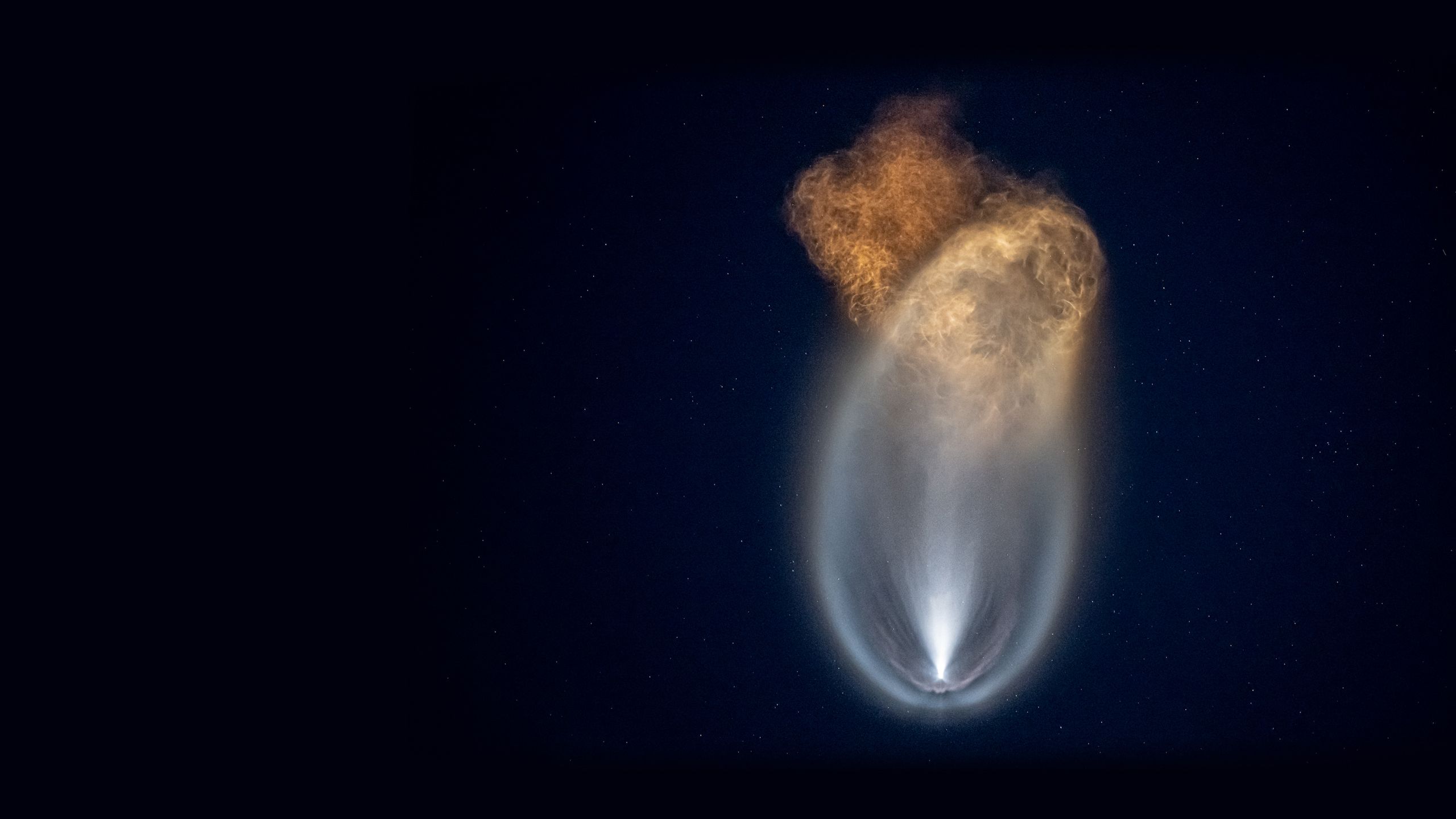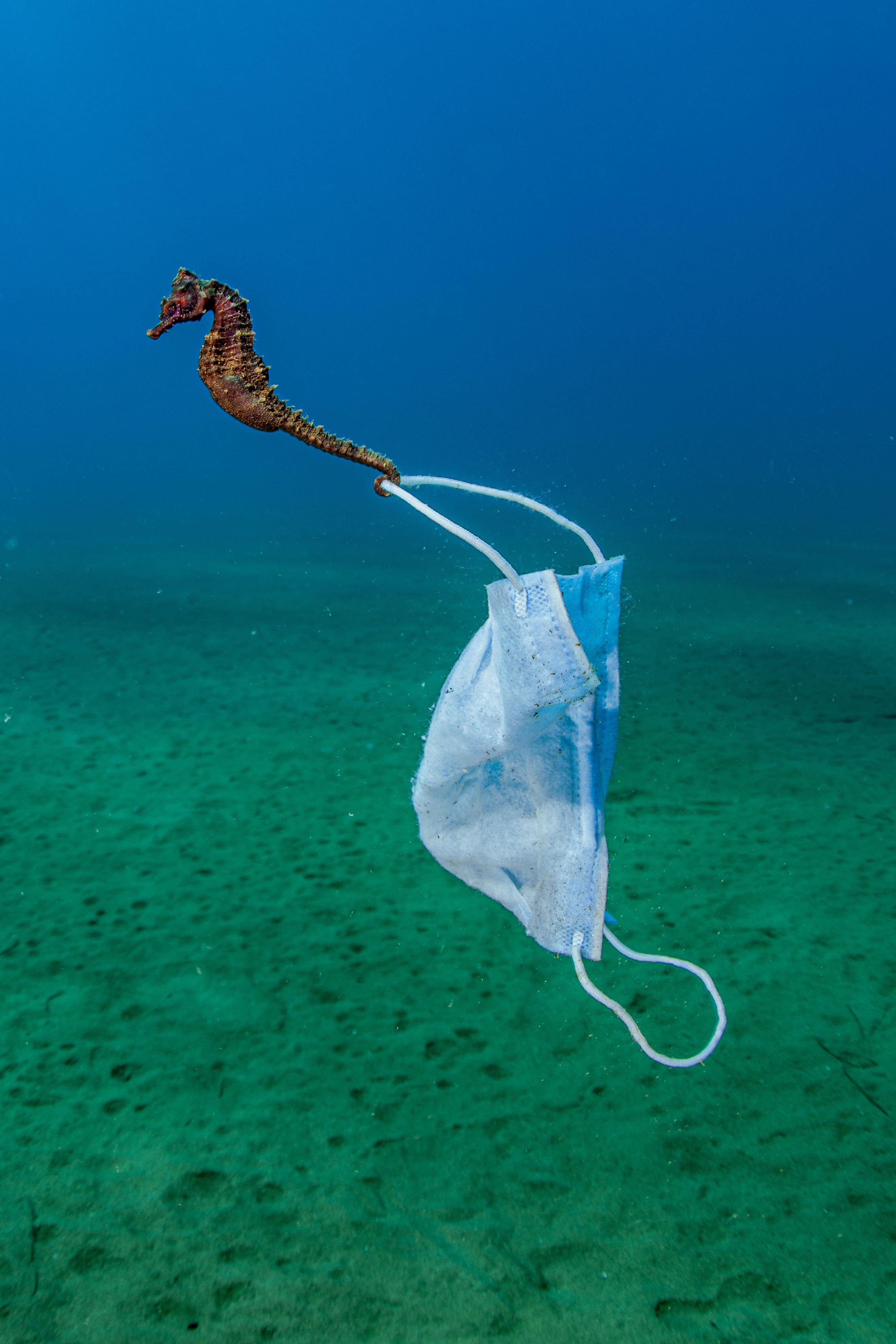Space jellyfish and subterranean robots — September’s best science images
The month’s sharpest science shots, selected by Nature’s photo team.

Space jellyfish. On 15 September, four private astronauts blasted into space on SpaceX’s Inspiration4 — the first all-civilian mission to orbit Earth. The post-sunset launch created this ‘space jellyfish’, a photographic phenomenon in which gases from a rocket’s exhaust are illuminated by the Sun from beneath the horizon. The Inspiration4 crew completed a three-day orbit of the planet before safely splashing down in the Atlantic Ocean.

Rainbow river. Part of the Poisoned Beauty series, this photo of a river in Romania’s Apuseni Mountains shows the effects of contamination from gold and copper mining in the area. The bright colours are caused by chemical waste and runoff from the mines. The river is close to the ‘ghost village’ of Geamana, which was evacuated in the late 1970s to make way for mining and is now submerged in multicoloured, toxic water. The shot was taken by photographer Gheorghe Popa, and won the ‘abstract’ category at this year’s Drone photo awards.

Turtle tracker. A staff member at the Torre Guaceto nature reserve in Italy fits a GPS tracker and temperature sensor to a rescued sea turtle before its release. The equipment will be used to follow the turtle’s movement and monitor the effects of climate change in the Mediterranean Sea.

Credit: Andres Gutierrez/Anadolu Agency/Getty
Credit: Andres Gutierrez/Anadolu Agency/Getty
Island inferno. Thousands of people on La Palma in the Spanish Canary Islands were evacuated after the Cumbre Vieja volcano began erupting on 19 September, spewing out huge volumes of lava, ash and smoke. Cumbre Vieja straddles a mountainous ridge in the south of La Palma and erupted twice in the twentieth century, first in 1949 then again in 1971. Destructive lava flows have buried the landscape and destroyed hundreds of homes, flowing all the way to the Atlantic Ocean on the west coast.







The Micro Monument was constructed to celebrate scientific work being done in nanoscience and reflect a sense of physical exploration and accomplishment within this landscape. Credit: Micro Monument
Micro Monument

Constructed using dual photon polymerization in Georgia Tech’s IEN - Biocleanroom, the Micro Monument is barely visible to the human eye. At 40µm wide it is about half the thickness of the average human hair. Credit: Micro Monument
Constructed using dual photon polymerization in Georgia Tech’s IEN - Biocleanroom, the Micro Monument is barely visible to the human eye. At 40µm wide it is about half the thickness of the average human hair. Credit: Micro Monument

The Micro Monument flag pattern is a design by The International Flag of Planet Earth Organization. Their goal is to represent all people of earth and be a reminder that we share this planet and should take care of it. Credit: Micro Monument
The Micro Monument flag pattern is a design by The International Flag of Planet Earth Organization. Their goal is to represent all people of earth and be a reminder that we share this planet and should take care of it. Credit: Micro Monument

The monument was made with the Nanoscribe Photonics GT 3D Lithography system at Georgia Tech’s IEN - Biocleanroom. Credit: Micro Monument
The monument was made with the Nanoscribe Photonics GT 3D Lithography system at Georgia Tech’s IEN - Biocleanroom. Credit: Micro Monument

The monument was imaged with the Hitachi 8230 CFE-SEM at Georgia Tech’s IEN - Biocleanroom. Credit: Micro Monument
The monument was imaged with the Hitachi 8230 CFE-SEM at Georgia Tech’s IEN - Biocleanroom. Credit: Micro Monument

The monument's base, made using the same material and process as in the production of semiconductors, serves as a plaque to display the structure. Credit: Micro Monument
Credit: Micro Monument
Micro monument. A team of designers and researchers has created a ‘micro monument’ to nanoscience, using a technique called dual photon polymerization to 3D print a tiny version of the International Flag of Planet Earth. The flag stands 128 micrometres tall and is just 44 micrometres wide — around half the thickness of a human hair. The monument was constructed “to celebrate scientific work being done in nanoscience and reflect a sense of physical exploration and accomplishment within this landscape”, its creators say.

Credit: Nicholas Samaras/Underwater Photography
Credit: Nicholas Samaras/Underwater Photography
Pandemic pollution. A seahorse off the coast of northern Greece clings to a discarded surgical mask, highlighting the growing environmental toll of pandemic waste. According to some estimates, the pandemic response has generated more than 1.6 million tonnes of plastic waste each day globally, including disposable personal protective equipment such as face masks, gloves and aprons. This photo, captured by Nicholas Samaras, was highly commended in the 2021 Ocean Photography Awards.

Credit: DARPA SubT Challenge
Credit: DARPA SubT Challenge
Robot challenge. Eight teams competed in the final of the DARPA Subterranean Challenge, a competition run by the US Defense Advanced Research Projects Agency that put autonomous robots through their paces mapping, navigating and searching underground courses designed to simulate real-life search-and-rescue scenarios. Here, the Human Supervisor for the CSIRO Data61 team — which included members from the Australian government’s Commonwealth Scientific and Industrial Research Organisation, robotics company Emesent and the Georgia Institute of Technology — receives data from its robots. It’s the supervisor’s job to filter through what the robots see, and submit their guess as to where objects are hidden in the course. The CSIRO Data61 team came second overall in the competition, which was won by CERBERUS, an international team of researchers from several universities and companies.
Credit: Thibaut Humbert, Stéphane Barré, Alexis Desmougin & Didier Walliang (Société Lorraine d'Astronomie), Astroqueyras. This video has no sound.
Credit: Thibaut Humbert, Stéphane Barré, Alexis Desmougin & Didier Walliang (Société Lorraine d'Astronomie), Astroqueyras. This video has no sound.
Jupiter impact. This video was captured by amateur astronomers at the Observatory of Saint-Veran in France, who spotted a bright, 2-second-long flash of light on the surface of Jupiter on 13 September. The flash was probably caused by a bus-sized object hitting the planet — perhaps a fragment from a comet or asteroid. Such impacts have been seen before on Jupiter but are quite rare, with only a handful being observed over the past few decades.

Credit: Charles Krebs/Nikon Small World
Credit: Charles Krebs/Nikon Small World
Pollen grain. This photograph of a pollen grain on a crocus flower petal, magnified tenfold, was an Image of Distinction in the 2021 Nikon Small World photomicrography competition. “I love photographing nature of all kinds, but the world didn’t really need another elk picture,” said Charles Krebs, who captured the shot. “I like to show people interesting aspects of a subject that they never see. I’m most interested in images that show people some day-to-day things that are incredibly beautiful, incredibly interesting and have incredible stories behind them if you look at them close enough.”